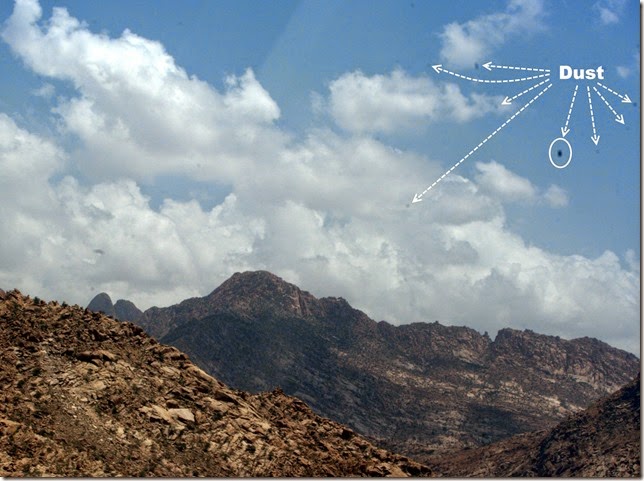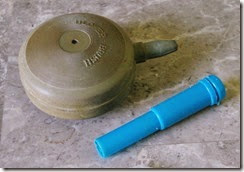
Trying to photography in the Saudi Arabian Desert has highlighted the issues of dust and (mirrored) DSLR cameras. Basically each time the mirror folds up to take a picture and exposes the sensor. The desert wind pick up fine sand particles and dust and it penetrates everything from your ears, anything you touch and eat, even to filling your back pocket. When you change lens for example some dust can find its way inside your camera and onto the sensors. Leaving those annoying little spots on your image. The image above has the very clear black spot of a fine sand particle but also so many ghosted dots (also dust) that I gave up pointing to them all, in the photo above.
So what can you do about it?
The first thing to remember there are now good tools to recover any photos you have taken that have unfortunate spots. These are generally versions of cloning tools that allow you copy the texture/detail for a nearby area over the spot and thus erase it. In lighroom this is called the spot removal tools and cab be found in the development module. In Picasa it is called Retouched and found in the basic edit tools. In AfterShot Pro it is called heal (which just fixes circular blemishes like dust) and is found in their layer manager.The better solution is to clean your sensor of dust as soon as you detect it. This is relatively easy for most camera but a few makers and models do recommend that you get the camera cleaned by the company or their designated agents (and that can be expensive!) For the rest of use check you camera manual and carefully follow the instructions. Some cameras like my Pentax K20D has a sensor shake mechanism to dislodge dusk particles, and often can do this at start-up.
 However bi also just find the setting to clean the sensor which lift the mirror and expose the lens. With the lens remove i them a conventional blower with the brush removes and with the camera upside down I give the sensor a good blast of air. Remember you must never touch the sensor with anything, hold the blower a couple centimetres away (approx. 1”) below the sensor and squeeze the bubble several times pointing at different parts of the sensor. I find this approach works well, if the dust is fresh. If the dust have been there a while it may take a couple of cleanings to get rid of all the spots. I have previously posted that a good way to find dust spots is to photograph a clear sky.
However bi also just find the setting to clean the sensor which lift the mirror and expose the lens. With the lens remove i them a conventional blower with the brush removes and with the camera upside down I give the sensor a good blast of air. Remember you must never touch the sensor with anything, hold the blower a couple centimetres away (approx. 1”) below the sensor and squeeze the bubble several times pointing at different parts of the sensor. I find this approach works well, if the dust is fresh. If the dust have been there a while it may take a couple of cleanings to get rid of all the spots. I have previously posted that a good way to find dust spots is to photograph a clear sky. I have found giving my camera a strange turban-like bit of head gear, made from a face washer rather than the traditional tea towel patterned cloth in the saudi style, and a rubber band has helped a lot. Although it will never be white again. Those familiar with hitch hiker’s guide to the galaxy will know that a small towel is an essential travel necessity, (especially so for a photographers). And importantly I don’t change lenses out in the open.
I have found giving my camera a strange turban-like bit of head gear, made from a face washer rather than the traditional tea towel patterned cloth in the saudi style, and a rubber band has helped a lot. Although it will never be white again. Those familiar with hitch hiker’s guide to the galaxy will know that a small towel is an essential travel necessity, (especially so for a photographers). And importantly I don’t change lenses out in the open.
No comments:
Post a Comment